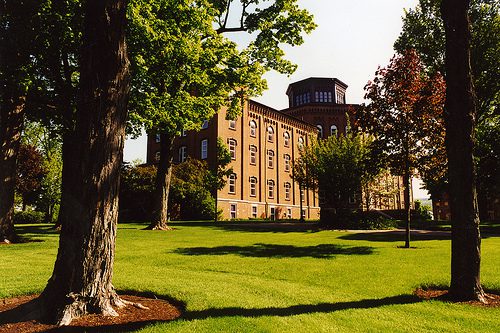3 Tips to Finding Your Best College Environment


Back to school always brings a rush of adrenaline. New classes and new teachers, new after school activities and new routines fill the calendar. While you’re focused on the newness immediately in front of you, I hope the prospect of college is whispering in your ear. In reality, it probably feels more like a roar. The endless questions mashing together are daunting and overwhelming.
Which school do I want to attend? Which one will accept me? Will I make new friends easily? What will the dorms be like? Will I enjoy living away from home?
To calm the confusion and muffle the roar I advise students to start by identifying needs and wants at a very basic level.
Begin by considering which college environment suits your learning style best.
Is it art colleges, liberal arts colleges, or universities? When you understand the differences the three offer, many of your early questions will begin to answer themselves. Here’s what I mean.
1. Art and design colleges are institutes of immersion.
Everyone here is engaged in art 24/7. Fashion designers, interactive designers, fine artists, and printmakers all learn together. 2/3rds of your class and study time will be devoted to art and design. Everything else is supportive. Yes, science, math, and English are still required but the subject matter and lessons learned are purposely intended to move your artistic skills forward. Consider anatomy as a way to better understand how to draw the human body. Art and design colleges are typically 1,200-2,000 people. A tight-knit community where you’re likely to know most people on campus, and you’ll be able to make an impact. Graduates typically earn a BFA.

2. Liberal arts colleges build independent thinkers.
Strong foundational skills are part of their DNA. The basics of writing, critical thinking, and communication will enhance your artistic growth here, whether you use them as an artist or supporting the field in the business or nonprofit world. Passions extend beyond the arts, so getting involved with political or human rights campaigns is easy to do. Most campuses and classes are small, providing ample opportunity for one-on-one learning with professors. A liberal arts setting is broad in its course offerings including Asian Studies, Shakespeare, philosophy, and music theory. Roughly 30% of class and study time is devoted to art and design, and most graduate with a BA. Students major in a variety of subjects.

3. Amenities are abundant at universities.
If you want it chances are a large college campus will have it. Greek life, football games, and an affiliation with every imaginable organization come to mind. Your roommate might study agriculture, international affairs, or Russian literature. Study across fields yourself or create your own major; think design and engineering or illustration and biology. Interdisciplinary studies create endless learning possibilities. And once on campus, if you change your mind about your future path, you’ll have a wealth of other majors to consider. Since your professors are often top researchers in their fields you may end up doing a bit of undergraduate research yourself. Graduates earn an array of degrees including BFA, BA, and BS.

Getting clear about what type of college environment you prefer will get you off to a great start. Begin family conversations early, and include a visit to each type of campus if you can.
Follow Elaine Pelz, author and college search consultant for the visual arts at Art.College.Life
Facebook https://www.facebook.com/ArtCollegeLife
Twitter https://twitter.com/ArtCollegeLife
Pineterest https://www.pinterest.com/artcollegelife/
